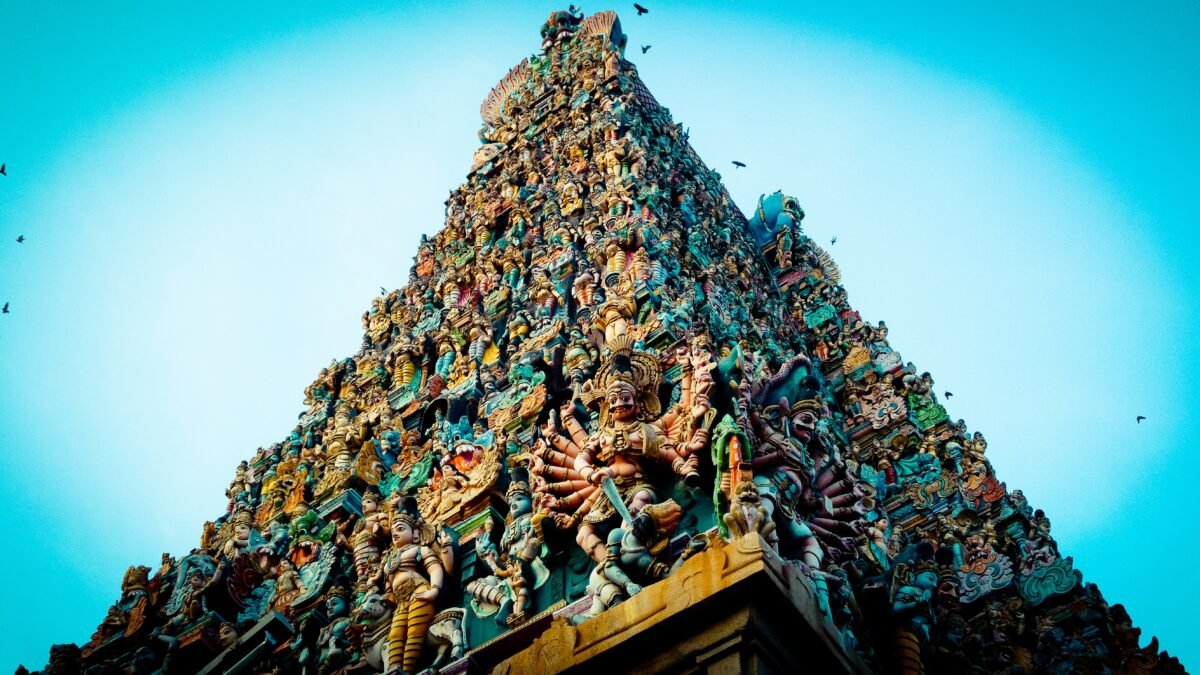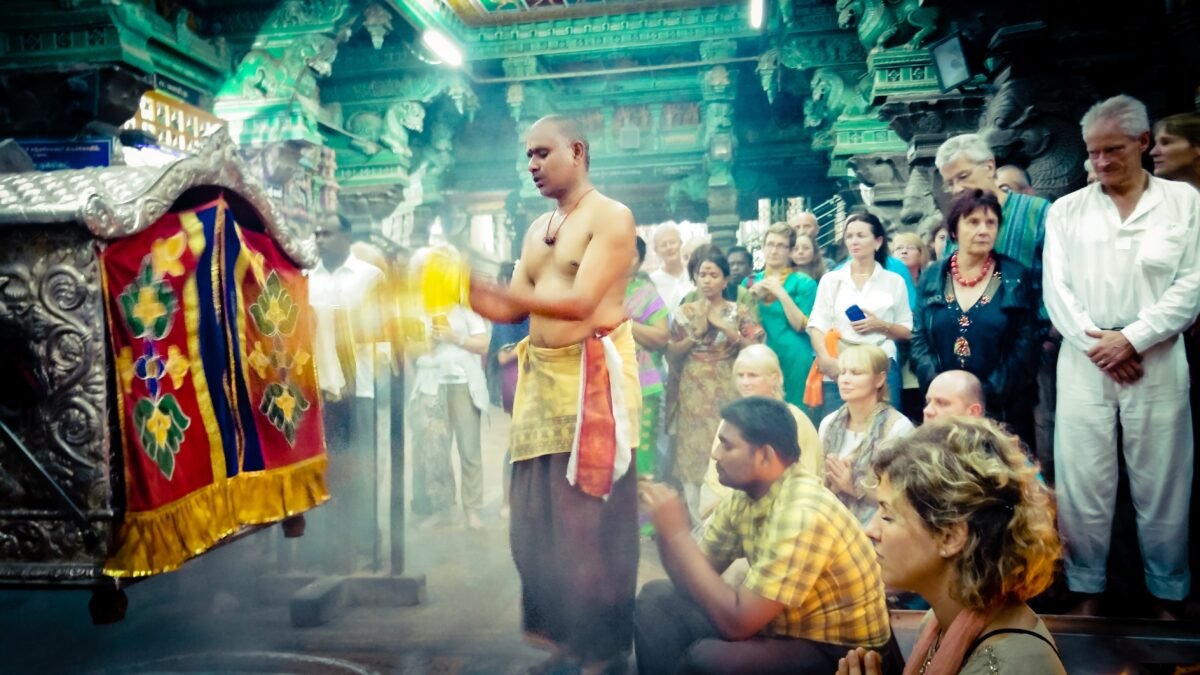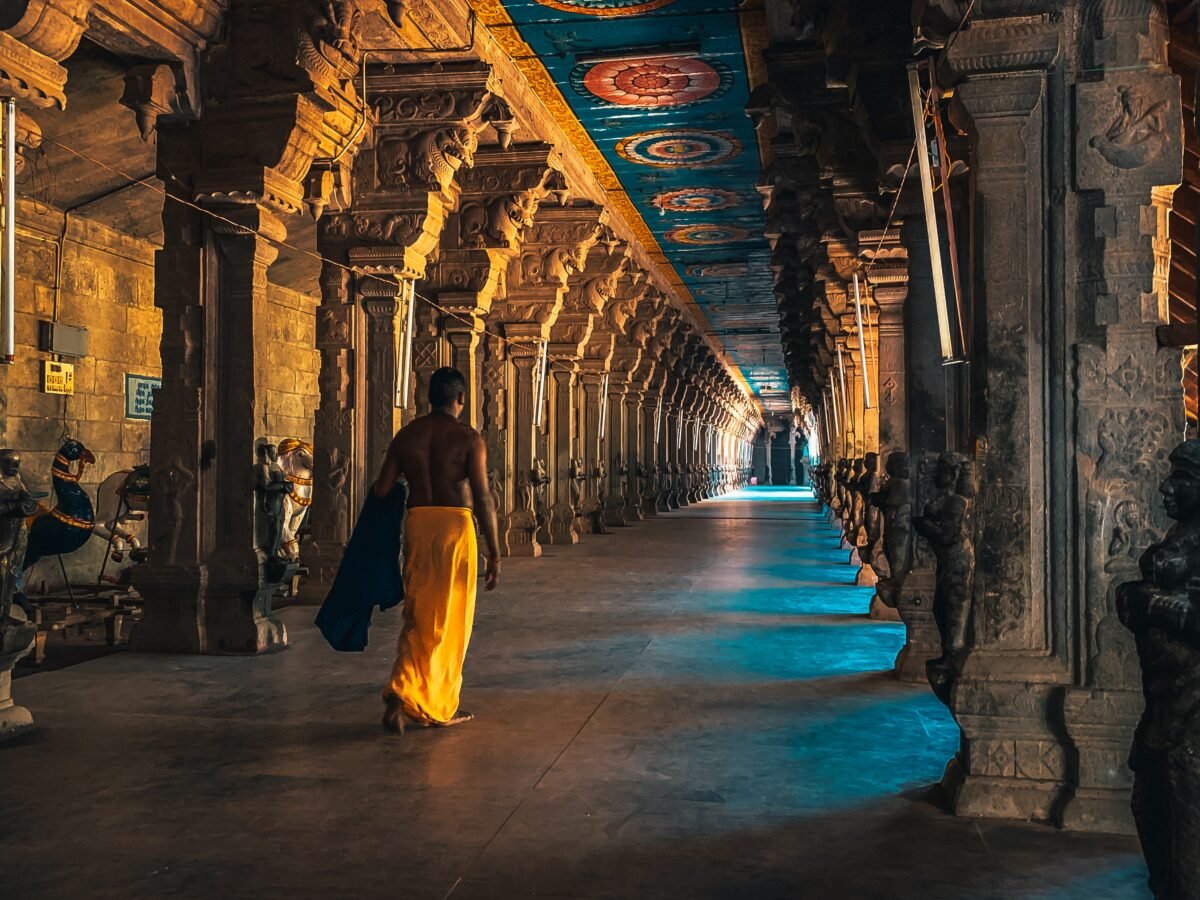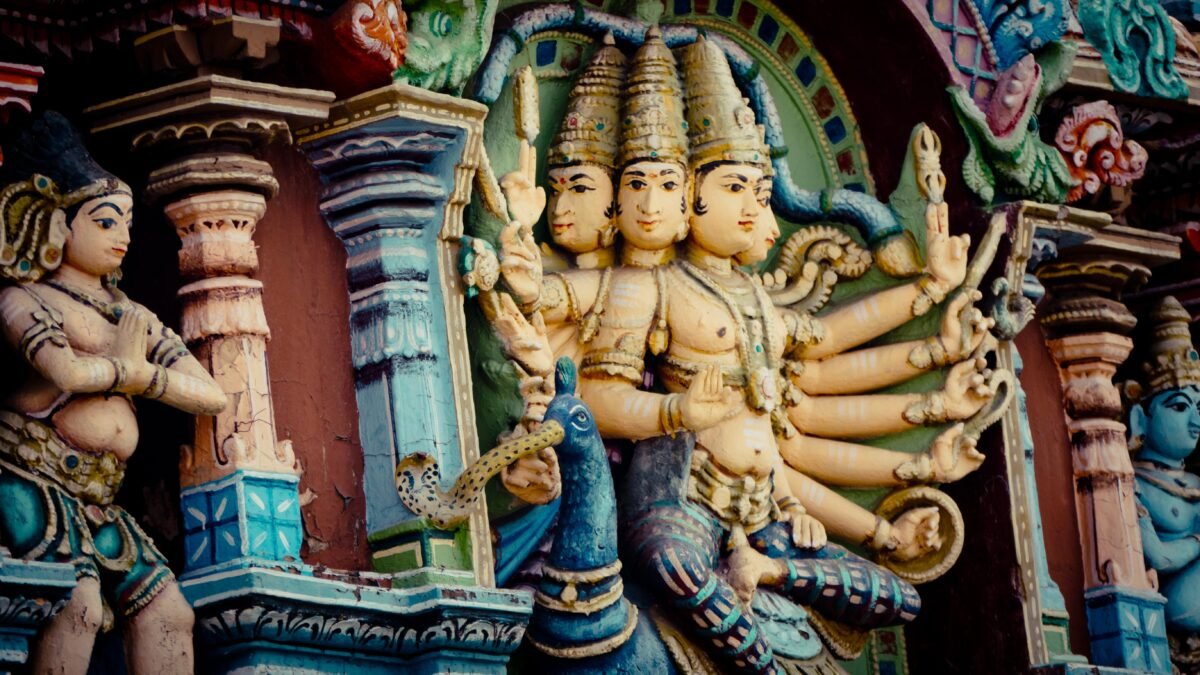௨
சிவமயம்
திருச்சிற்றம்பலம்
கொற்றவன்குடி – உமாபதி சிவாசாமியர்
சிவப்பபிரகாசம்
ஒளியான இருமேவி உமிழ்தானம் மீகமேவு
காப்பு
களியார வரும்ஆணை கழல்காளும் மறவாமல்
அளியாளும் மலர்தூவும் அடியார்கள் உளமான.
Verset bénédictin
Éclairés et libres de pensées de karma sévère deviendra le cœur des dévots qui n’oublient jamais de joncher les fleurs bourdonnant d’abeille tous les jours aux pieds héroïques de la Déité éléphant dont la forme sacrée est Spirituelle lumière et qui sort déversant le must de la sagesse divine et dispensant la joie suprême (pour s’adapter aux âmes).
பாயிரம்
Le Siva dansant
ஓங்கொளியாய் அருள்ஞான மூர்தீதி யாக
சிவம்
உலகமெலாம் அளித்தருளும் உமையம்மை காணத்
தேங்கமழும் மலரிதழி திங்கள் கங்கை
தஇகழரவம் வளர்சடைமேற் சேர வைத்து
நீங்கலரும் பவத்தொடர்ச்சி நீங்க மன்றுள்
நின் நிமையோர் துதிசெய்ய நிருத்தம் செய்யம்
பூங்கமல மலர்த்தாள்கள் சிரத்தின் மேலும்
புந்தியினும் உறவணங்கிப் போற்றல் செய்வாம். 1
Sur notre tête et notre cœur, nous divertirons, vénérerons et chérirons les beaux pieds de lotus de Lui, qui est la source de la lumière montante primordiale, dont la forme est la grâce et la sagesse, dont les tresses qui se répandent sont le siège des fleurs miellées de Konrai, le croissant de lune, le Gange et le serpent scintillant et qui, avec l’intention de nous sortir de la chaîne sans fin des naissances , danse dans la salle commune de toutes les âmes sur les airs applaudissant des anges, de régaler l’œil de mère Uma le protecteur de tous les mondes.
Déesse Sivagami
பரந்தபரா பரையாதி பரன திச்சை
சத்தி
பரஞானம் கிரியைபர போக ரூபம்
தருங்கருலே உருவாகி விசுத்தா சுத்தக்
தனுகரண புவனபோ கங்கள் தாங்க
விரிந்தகபா தானங்கள் மேவி ஒன்றாய்
விமலமாய் ஐந்தொழிற்கும் வித்தாய் ஞாலத்(.து):
அரந்தைகெட மணிமன்றுள் ஆடல் காணும்
அன்னையருட் பாதமலர் சென்னி வைப்பாம். 2
Sur notre tête, nous recevrons les gracieuses fleurs des pieds de la mère qui est la puissance suprême omniprésente, la Première Cause de tous et la grâce, la sagesse et l’énergie de l’Être Suprême. Sa forme est la miséricorde divine qui accorde (sur les âmes en forme) le cadre de bonheur suprême. Elle est l’énergiser des mayas purs et impurs à partir de laquelle sont évolués le substrat de base expansif de toutes sortes de corps, esprits, mondes et substances. Elle est la très à multiples face, une énergie sainte de Dieu, la semence de cinq grandes fonctions de Lui et le témoin oculaire dans la belle Salle de la Danse Divine destinée à annuler les malheurs du monde.
Dieu Ganesa
நலந்தர நூல் இருந்தமிின் செய்யுட் குற்றம்
விநாயகர்
நகண்ணாமை இடையூறு நலியாமை கருதி
இலங்குமிரு முழையருகு பொருதுவரி சிதறி
இணைவேல்கள் இகழ்ந்தகயற் கண்ணியொடும் இறை
கலந்தருள வரும்ஆனை முகத்தான் மும்மைக் (வன்
கடமருவி யெனகிலவு கணபதியின் அருளால்
அலர்நீ தாது கரமுனிவர் பரவவளர் கமலம்
அனையதிரு: வடியினணைகள் நினைதல் செய்வாம். 3
En vue d’accomplir ce travail en tamoul élevé, exempt de défauts de mètre et de grammaire, et d’assurer son achèvement sans entrave et son bon usage, nous contemplerons la paire de pieds roses sacrés, s’épanouissant en grâce au chant pieux des saints qui sont comme les abeilles, de l’Éléphant face à la divinité qui est le Seigneur des communautés d’anges et dont le triple must de sagesse jaillit comme un torrent et qui a été engendré par Dieu Siva et son épouse dont les yeux de poisson comme, dépassant une paire de lances dans la beauté et orné de lignes rouges naturelles, sauter comme pour faire face à la feuille étincelante comme des bijoux anneau de l’oreille.
Dieu Muruga
வளகிலவு குலஅமரர் அதிபதியாய் நீல
௬ப்பிரமணியர்
மயிலேறி வரும்ஈசன் அருள்ஞான [தலை
அளவில்பல கலைஅ௮ங்கம் ஆரணங்கள் உணர்ந்த
அகத்தியனுக் கோத்துரைக்கும் ௮ண்ணல்விஐ
உளமருவு சூரனுரம் எமதிடும்பை ஓங்கல் [லெண்ணா
ஒன்றிரண்டு கூறுபட ஒளிஇகழ்வேல் உகந்த
களபமலி கு.ஐமகள்் தன் : மணிமுலைகள் கலந்த
கந்தன்மல ரடியிலைகள் சிதை செய்வாம். 4
Nous méditerons sur les deux pieds de Dieu Muruga qui est le commandant de Devas de haut-né de l’opulence constante, l’enfant divin de la grâce et de la sagesse chevauchant le paon bleu, le gourou spirituel de sainte Agastiya, bien versé dans d’innombrables sciences, écritures et leurs branches, le héros qui a volonté de jetant sa lance brillante et couper en deux la poitrine de Suran sans esprit de ses prouesses, la colline de Krounja et ma misère, et l’amant qui embrassait la belle poitrine de la fille du chasseur débordant de pâte parfumée
La ligne des gourous
தேவர்பிரான் வளர்கயிலைல் கரவல் பூண்ட
சந்தரனகுஈவர்
திருந்து அவர்கணத்தோர் செல்வர் பாரிழ்
பாவியசத் தியஞான தரிசனிகள்: அடிசேர்
பரஞ்சோதி மாமுனிகள் பதியா வெண்ணெயி
மேவியசீர் மெய்கண்ட. திறலார் மாறு
விரவுபுகம் அருணந்தி விறலார் செல்வத்
தாவில்௮ருள் மறைஞான சம்பந்தர் இவர்இச்
சந்தானத் தெமையாஞளாம் தன்மை யோரே. 5
Seigneur Guru des Devas assis sur le mont Kailas, Nandhi le saint gardien de la haute colline, (Sanatkumara) l’une des communautés de disciples de Nandi, Satyagnanadarisanigal de grande renommée atteignant loin dans le monde, le grand Paranjoti, le héros réputé Saint Meykandar de Tiruvennainallur, l’illustre Saint Arulnandhi de réputation sans changement, et saint Marai-jnanasambandar doté des richesses de la grâce impeccable sont nos maîtres dans cette ligne de transmission héréditaire de la sagesse spirituelle.
Maraijnanasambandar
பார்திகம வளர்சாஈ வேதம் மல்கப்
மறைஞானசம்பந்தர்
பராசரமா முனிமரபு பயில ஞானச்
சார் பதர வர்தருளி எம்மை யாண்ட.
சைவசிகா மணிமருதத் தலைவன் அந்தண்
கார்மருவு பொழில்புடைசூழ் மதில்மீதே மதியம்
கடவாமை நெடுங்கொடியின் கரந்தகையும் கடந்தைச்
சர்கிலவு மறைஞான சம்பந்தன் எந்தை
தருவளரு மலரடிகள் சென்னி வைப்பாம். 6
Sur notre tête, nous divertirons la fleur comme des pieds de beauté croissante de notre père spirituel Maraijnanasambandar de gloire éternelle qui est le joyau de la couronne du saivisme. Pour perpétuer la descente de la sagesse spirituelle sur terre, pour la popularisation des nombreux côtés Sama Veda et la renommée de la ligne du grand Parasara, il est venu au monde et nous a rachetés. Il est né à Marudur et a prospéré à Pennagadam entouré par les bosquets de ligne fraîche bordée de nuages, dont les murs de frontière les hautes bannières avec leurs franges en forme de main tiré vers le haut et entravé le passage de la lune le long du ciel.
La substance de l’œuvre
புறச்சமயத் தவர்க்கருளாய் அகச்சமயத் தொளியாய்ப்
நுதலிய பொருள்
புகல்அளவைக் களவாூப் பொ ற்பணிபோல் அபேதப்
பிறப்பிலதாய்இருள்வெவிபோ ற்பேதமும்சொற்பொருள்
பேதாபே தமும்இன் றிப் பெருநூல் சொன்ன [போல்
அறத்திறனால் விளைவதாய் உடலுயிர்கண் அருக்கன்
அறிவொளிபோல் பிறிவரும்௮த் துவித மாகம்
சிறப்பினதாய் வேதாந்தத் தெளிவாம் சைவ
சித்தாந்தத் திறன் இங்குத் தெரிக்க லுற்றும். 7
Nous avons l’intention d’exposer ici, les vérités du système Saiva Siddhanta, l’essence distillée de la Vedanta, qui est sombre pour les païens et lumineux pour les adeptes des croyances intérieures et satisfaire les normes réputées de la logique, et qui est remarquable pour préconiser une telle inséparable Adwaitic (non-dual) union de Dieu et du monde comme ne justifiera pas leur identité substantielle comme l’or et les bijoux en fait, ou leur opposition comme la lumière et l’obscurité ou toute relation médiane comme celle de la parole et le sens. Une telle union sera comparable dans leur unité au mélange du corps et de l’âme et dans leur diversité à la lumière de l’œil et de la lumière du soleil et dans leur concomitance à la puissance sachant de l’âme et à la puissance voyante de l’œil, et sera réalisable comme le fruit d’un cours de pratique juste ordonné par de grands livres de sagesse.
கூவகைஆ ருயிர்வர்க்கம் மலத்தார் கன்ம
தக்கை முறைமை
கூலமலத் தார்மூன்று முடையா ரன்றே
இவகமாம் எனஉருவாய் வந்து காதன்
திருநோக்கால் பரிசத்தால் திகழும் வாக்கால்
பாவனையால் மிகுநூலால் யோகப் பண்பால்
பரவிவரும் ஓளத்திரியாற் பாச நாசம்
மேவ௮ர௬ ளுதவும்அவுத் திரியிரண்டு திறனாம்
வியன்கிரியை ஞானமென வீளம்பு மாறே. 8
La somme totale de toutes les âmes se classe en trois catégories, la première se composant de celles affectées uniquement par le lien des ténèbres (le lien originel), la seconde de celles affectées par les liens des ténèbres et du karma, et la troisième de celles affectées par les liens des ténèbres, du Karma et des Mayas. Sur le principe de montrer comme aimer (en attrapant des animaux) le Seigneur vient racheter l’homme affecté triple sous le couvert de l’homme et lui confère la grâce nécessaire pour briser les liens au moyen de son regard saint, toucher, parole mystique lumineuse, force de pensée, l’instruction dans les Écritures et la pratique yogique et par l’exécution de l’homa qui sera soit externe ou interne. Le premier est connu sous le nom d’initiation par l’action et la seconde initiation par la connaissance.
வீரும்பியமந் திராஇகாரம் அர்ச்சனாஇ காரம்
மேவும்யோ காதிகாரம் எனச்சமய விசேடம்
வரும்பொருவில் நிருவாண மந்திரங்கள் பதங்கள்
வன்னங்கள் புவனங்கள் தத்துவங்கள் கலைகள்
வடக்க தொகைபதினொன் ஹறெண்பத்தொன் ழறைம்
மிரு. நாற்றோ .ருபத்து நாலாறு றைந்திற் பலிர்தன்
பரந்தமெ.றி அறுவகையும் ஒஓருவிகினை வரிதாம்
பரபதத்துள் உயிர்வீரவப் பயிற்று பன்றே. 9
Il existe trois formes d’initiation; le premier connu sous le nom de Samayam qualifie l’un pour l’utilisation de Mantras, le second connu sous le nom Visesha qualifie l’un pour se spécialiser dans les rites de culte et la pratique yogique, et le troisième connu sous le nom nirvana conduit sur le chemin de la sagesse spirituelle en aidant l’âme à se nettoyer des six types de façons par lesquelles les fruits du Karma l’atteindre. Lesdits moyens se trouvent à travers la région de Mantrams, pathams, et des lettres sur le d’une part et celle des centres mondiaux (Bhuvanam), Tatwas et Kalais de l’autre, Mantrams numéro onze, pathams quatre-vingt-un et lettres cinquante et un, et monde centres deux cent vingt-quatre, tatwas trente-six et Kalais cinq.
இரியையென மருவுமவை யாவும் ஞானம்
இடைத்தற்கு நிபித்தமெனக். கிளக்கும் உண்மைச்
சரியைகிரி யாயோகத் தன்மை யோர்க்குச்
சாலோக சாமீப சாரூ பங்கள்
மருவியிடும் உயர்ஞான மீரண்டாம் மாரா
ல்மகல அகலாத மன்னு போதத்
திருவருளொோன் ரொன்றதனைத் தெளிய வோதும்
சிவாகமமென் ற.லகறியச் செப்பும் நூலே. 10
Les Écritures disent que toutes sortes d’acte pieux conduisent à la réalisation de la sagesse spirituelle. Le vrai sariya (service subsidiaire), Kiriya (rites de l’adoration) et le Yoga conduisent directement et respectivement à Saloka (vivant dans le ciel de Dieu), Sameepa (vivant près de Dieu) et Sarupa (atteignant la forme de Dieu) et indirectement à la réalisation de la haute sagesse. La sagesse spirituelle édifiante est de deux grades l’un étant la grâce de Dieu qui est dans sa sagesse éternelle qui prend durablement l’âme après sa rédemption des liens invétérés et l’autre étant la sagesse claire inculquée par Saiva écritures indiquant la voie à la réalisation d’une telle grâce.
தெரித்தகுரு முதல்வர்உயர் சிவஞான போதம்
நான்மரபும் பெயரும்
செப்பினர்பின் பவர்புதல்வர் சிவஞான இத்தி
வீரித்தனர்மற் றவர்கள்திரு வடிகள் போற்றி
விளம்பியநூல் அவையிரண்டும் விரும்பி கோக்கிக்
கருத்திலுறை திருவருளும் இறைவன் நூலும்
கலந்துபொது உண்மையெனக் கருதி யானும்
அருத்திமிக உரைப்பன்வளர் விருத்தம் நூறும்
ஆசில்வப் பிரகாசம் ஆகு மன்றே. 11
Le célèbre Seigneur Guru (Saint Meykandar) composa le grand Sivagnanabotham et plus tard son fils spirituel (saint Arulnandi) étendit ses vérités dans son œuvre Sivagnana Siddhi. Mon culte est dû à leurs pieds saints. J’ai étudié avec enthousiasme les deux livres et rassemblé leurs idées avec ce qui a été révélé par la sainte grâce dans mon esprit et les vues de Sivagamas sur le sujet, les condensés dans une œuvre d’une centaine de versets progressistes dans Virutha mètre composé de deux parties générales et spéciales actionnées par mon ambition intense; et même mon travail a pris forme comme Sivaprakasam impeccable.
Appel aux lecteurs
தொன்மையவாம் எனும்ளவையும் ஈன்றாகா இன்று
அவையடக்கம்
தோன்றியநூல் எனும்எவையும் இதரகா துணிந்த
நன்மையினார் நலங்கொள்ளணி பொதியுமதன் களங்கம்
நவையாகா தெனஉண்மை ஈயந்இடுவர் நடுவாக்
தன்மையினார் பமமைஅழ காராய்ந்து தரிப்பர்
தவறுகலம் பொருளின்கட் சார்வாராய்ந் தறிதல்
இன்மையினார் பலர்புகழில் ஏத்துவர்ஏ திலருற் [லரே.
றிகம்ந்தனரேல் இகழ்ந்திடுவர் தமக்கெனவொன்றி. 12
Tout ce qui est vieux ne peut pas être considéré comme bon (en raison de son antiquité seulement) et tout livre qui sort aujourd’hui ne peut pas être jugé malade en raison de sa nouveauté. Les hommes se sont engagés à chercher le bien dans tout ne sera pas l’esprit de la poussière qui couvre un beau joyau, mais seulement apprécier sa vraie valeur. Les personnes de calibre moyen étudiera et accueillera la beauté et l’antiquité d’une œuvre. Les hommes qui n’ont pas la capacité de juger des défauts, des excellences et du travail substantiel d’une production la loueront, si beaucoup l’admirent, et la condamneront du même souffle en entendant d’autres en parler mal, parce qu’ils n’ont pas d’opinion pour eux-mêmes.









